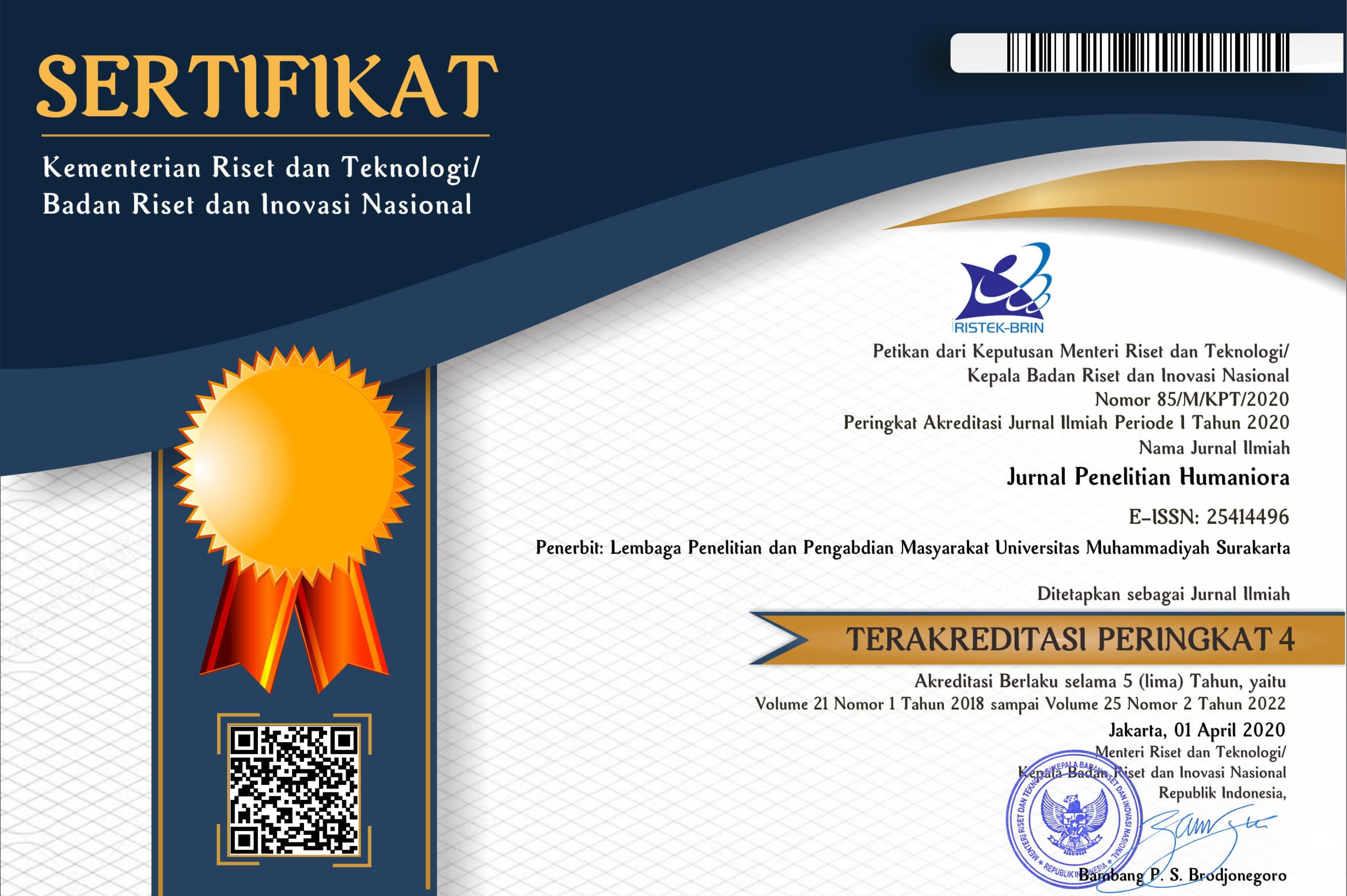THE CHARACTERISTICS OF ENGLISH CARETAKER SPEECH FOUND IN IMAGINE THAT MOVIE
Dewi Sri Pambudi(1*)(1) Universitas Muhammadiyah Surakarta
(*) Corresponding Author
Abstract
This research aims at describing the types of language forms and functions found in Imagine That movie. The type of this research is descriptive qualitative. The objects of the research are utterances by adults addressed to children. Subjects of this research are the caretakers found in Imagine That movie, covering father and mother. The writer used the manuscript of conversation Imagine That film as data source. The data were collected through documentation technique with the following steps: watching the original film and reading the movie script, underlining the caretaker utterances then writing them down. The data were analyzed qualitatively. The results show there four types of word: noun, verb, adjective, and adverb and four types of phrase: noun phrase, verb phrase, adjective phrase, and adverbial phrase and four types of sentence: declarative sentence, interrogative sentences, exclamatory sentences, and imperative sentences. With regards to language function, there are seven kinds: instrumental function, interactional function, regulatory function, imaginative function, personal function, representational function, and heuristic function.
Keywords
Full Text:
PDFReferences
Clark, Herbert H. And Eve V. Clark.(1977). Psychology and Language: An Introduction to Psycholinguistics. New York: Harcourt Brace Jovanovich. Inc.
Degaf, Agwin. (2010).A Study of Language Function Used by the Caretakers of Autistic Children in “Miracle Run”. Unpublished Research Paper. Malang: Maulana Malik Ibrahim State Islamic University of Malang.
Fauziati, Endang. 2011. Psycholinguistics: An Introduction. Surakarta: Era Pustaka.
Frank, Marcella. (1972). Modern English: A Practical Reference Guide. New Jersey: Prentice- Hall, Inc.
Halliday, M.A.K. 1997. Learning How to Mean: Explanation in the Development of Language. Elsevier North-Holland, Inc., New York.
Matychuk, Paul. (2004). “The Role of Child-Directed Speech in Language Acquisition: A Case Study.” Journal of Language Sciences, 27 ((2005). p. 301-309.
Tiritilli, Tracy L. “Ways in which Child-Directed Speech Combines with Social Interaction to Facilitate the Development of Language. “http://students.english.ilstu.edu/tltirit/ repurposing/homepage.htm. Accessed in April 13th, 2014, 01.00 P.M.
Whyatt, Boguslawa. (1994). “Baby Talk – The Language Addressed to Language-Acquiring Children: A Review of the Problem”. Studia Anglica Posnaniensia, 29, 126-128.
Article Metrics
Abstract view(s): 855 time(s)PDF: 1785 time(s)
Refbacks
- There are currently no refbacks.











